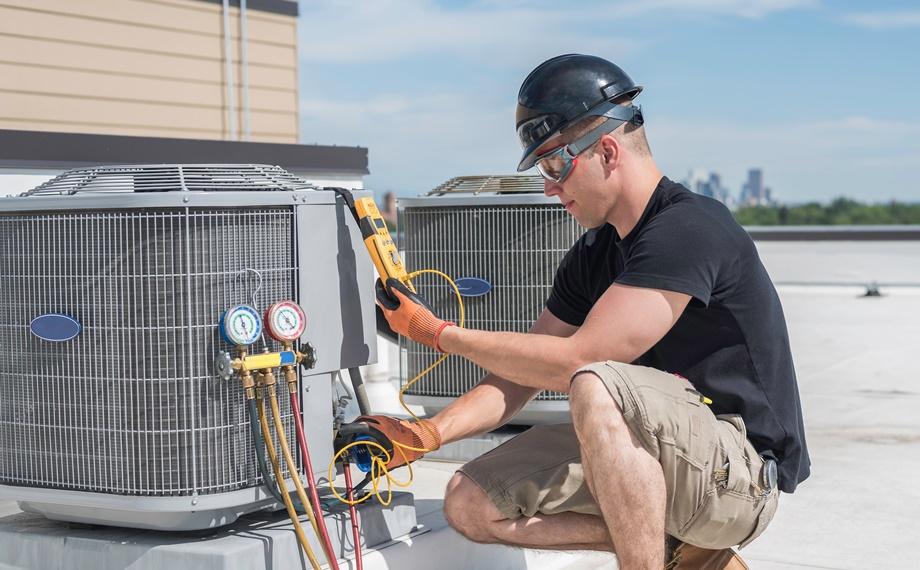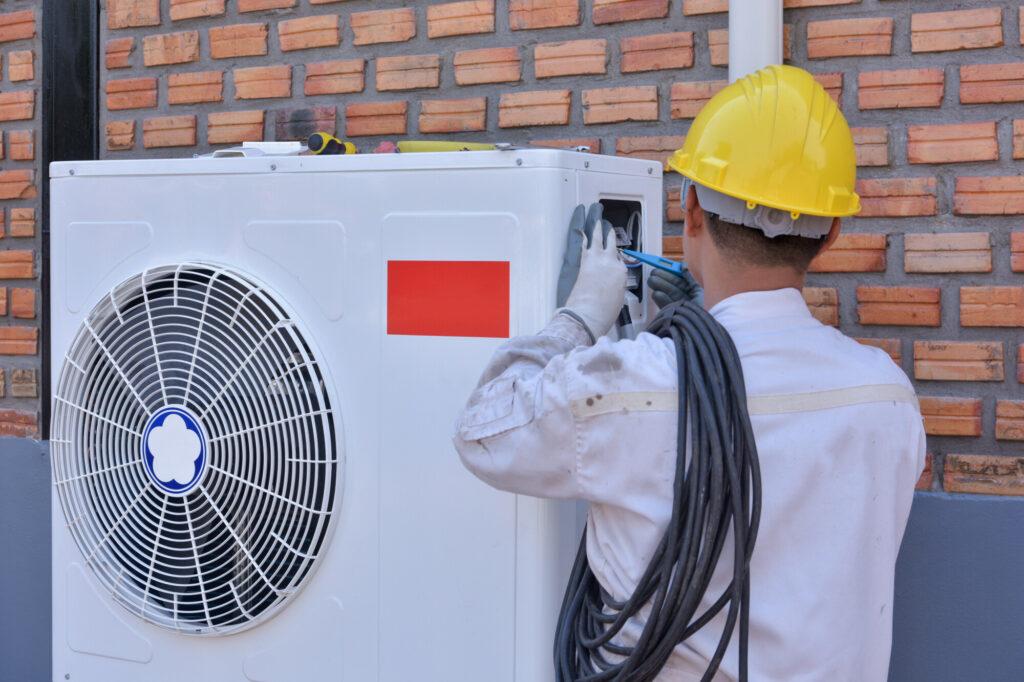The Unseen Impact of Indoor Air Quality
In an increasingly urbanized world, where a significant portion of our lives is spent indoors, the quality of the air we breathe within our homes and workplaces has become a paramount concern. This isn't just about comfort; it's about a fundamental aspect of health and well-being that often goes unnoticed until symptoms arise. Understanding the factors that contribute to indoor air quality (IAQ) is crucial for creating healthier living and working environments.
Indoor air can be surprisingly more polluted than outdoor air, even in the largest, most industrialized cities. This phenomenon is attributed to a combination of factors, including inadequate ventilation, indoor sources of pollutants like building materials and cleaning products, and the presence of allergens such as dust mites, pet dander, and pollen. The cumulative effect of these elements can significantly detract from our overall quality of life.
Among the various systems designed to maintain indoor comfort, the air conditioning (AC) system plays a surprisingly multifaceted role in influencing IAQ. While primarily tasked with temperature regulation, its operation inherently interacts with the air itself, circulating it throughout a space. This interaction can either be a powerful ally in promoting clean air or, if neglected, a significant contributor to air quality degradation.
A well-maintained AC system can actively filter out airborne particles, control humidity levels to prevent mold growth, and introduce fresh air from outside. Conversely, a poorly maintained system can become a breeding ground for bacteria and fungi, distribute allergens more widely, and even introduce unpleasant odors. The distinction lies in understanding the mechanics and committing to diligent upkeep.
For many, the AC system is simply a device that cools or heats. However, its sophisticated design means it is constantly processing the air that fills our spaces. Recognizing this continuous engagement with our breathable environment elevates the AC system from a mere convenience to a critical component of a holistic approach to indoor health. Zenexamura emphasizes this integrated perspective in its approach to environmental control.
Therefore, delving into the specific ways an AC system impacts IAQ is not merely a technical exercise but a vital step towards safeguarding public health and enhancing daily comfort. By gaining a deeper appreciation for this complex relationship, individuals and organizations can make more informed decisions regarding their indoor climate control strategies, ultimately leading to a healthier existence for everyone.
Applications and Considerations
- Residential Comfort and Health: AC systems are vital for maintaining comfortable temperatures and reducing allergens like pollen and dust in homes. A well-maintained system can significantly improve respiratory health for occupants. Limitations: Requires regular filter changes and duct cleaning to prevent the circulation of pollutants.
- Commercial and Office Environments: In business settings, effective AC systems contribute to employee well-being and productivity by ensuring a fresh, allergen-reduced atmosphere. Proper ventilation also minimizes the spread of airborne pathogens. Limitations: Large-scale systems demand complex maintenance schedules and can be costly to upgrade for advanced filtration.
- Specialized Facilities (e.g., Healthcare): Critical for controlling airborne contaminants and maintaining sterile environments in hospitals and laboratories. Precise temperature and humidity control are paramount for patient safety and equipment functionality. Limitations: High operational costs and stringent regulatory compliance are continuous challenges.
Expert Perspectives on Air Quality Management
Experts in environmental health consistently highlight the critical role of filtration in AC systems. Standard filters, while adequate for larger particles, often fall short in capturing microscopic pollutants, viruses, and bacteria. The consensus points towards the adoption of higher-MERV (Minimum Efficiency Reporting Value) filters or even HEPA filters where feasible, significantly enhancing the system's ability to purify the air. However, installing such filters requires careful consideration of system compatibility to avoid undue strain on the AC unit's fan motor.
The debate around optimal humidity levels within indoor environments is another area of active discussion. While AC systems are designed to dehumidify, excessive drying of the air can lead to respiratory discomfort and dry skin. Conversely, high humidity creates an ideal breeding ground for mold, mildew, and dust mites, all of which are significant allergens and irritants. Striking the right balance, typically between 40-60% relative humidity, is considered crucial by specialists for both comfort and health, often requiring precise control mechanisms within modern AC units.
The integration of advanced technologies, such as UV-C germicidal lights, into AC systems has garnered mixed reactions. Proponents argue that UV-C lights effectively neutralize airborne pathogens, including viruses and bacteria, as air passes through the system. Skeptics, however, question their overall effectiveness in real-world scenarios, citing factors like exposure time and light intensity. While beneficial in certain applications, particularly in healthcare settings, their widespread adoption in residential and commercial spaces remains a topic of ongoing evaluation regarding cost-effectiveness and measurable impact on IAQ.
Balancing ventilation with energy efficiency presents a perennial challenge for HVAC professionals. While bringing in fresh outdoor air is essential for diluting indoor pollutants, it often comes at the cost of increased energy consumption, especially in extreme climates. Modern solutions, such as energy recovery ventilators (ERVs) and heat recovery ventilators (HRVs), offer a compromise by exchanging indoor and outdoor air while minimizing temperature fluctuations. These technologies are increasingly recommended by experts as a sustainable way to maintain superior IAQ without significantly escalating operational expenses.
Ultimately, the most resounding expert opinion revolves around the absolute necessity of professional maintenance. Regular inspections, cleaning of coils, drain pans, and ducts, along with timely filter replacements, are non-negotiable for optimal AC performance and superior IAQ. Neglecting these fundamental practices can turn an air conditioning system from an asset into a liability, actively contributing to indoor air pollution rather than mitigating it. Zenexamura consistently advocates for scheduled professional care to ensure peak system efficiency and air purity.
Cultivating a Healthier Indoor Atmosphere
The relationship between your AC system and indoor air quality is undeniably intricate and profound. It extends far beyond mere temperature control, influencing the very air we breathe and, by extension, our health and comfort. Recognizing the AC system as a proactive tool for managing IAQ empowers us to make more informed decisions about its operation and upkeep.
Proactive maintenance, informed filter choices, and an understanding of humidity control are not just technical considerations; they are essential practices for cultivating a healthier indoor atmosphere. Investing time and effort into these aspects ensures that your AC system functions as a guardian of your air quality, rather than a potential source of concern. The long-term benefits to well-being and productivity are substantial.
By prioritizing the health of your AC system, you are, in essence, prioritizing the health of yourself and those around you. It's a continuous commitment that yields significant returns in terms of comfort, respiratory health, and overall peace of mind within any indoor environment. Zenexamura is dedicated to supporting these efforts through reliable solutions and expert guidance.




Comments (0)